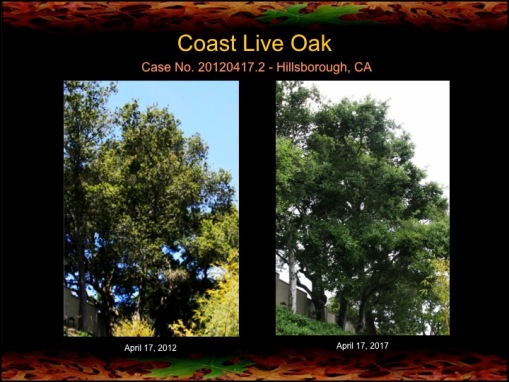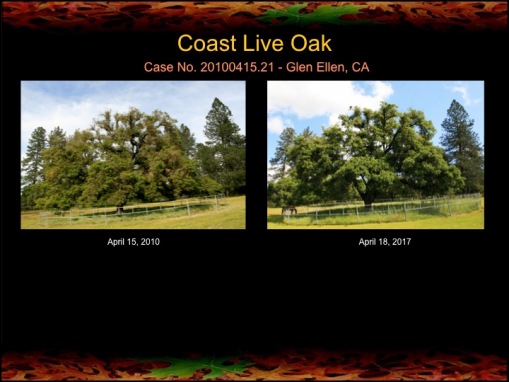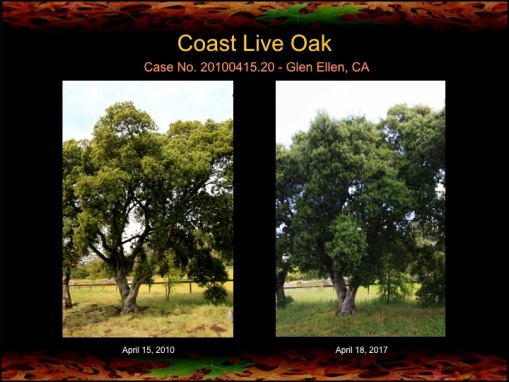
Six years ago I was approached by a property owner in Los Altos, CA who had two large Lebanese cedar trees, one of which was not doing well. He had been advised by another tree expert to remove the sick cedar. This cedar has some sort of bleeding stem infection at the base and a fairly thin canopy. Rather than removing it, the owner called me to assess the problem. I told him frankly that I had no experience treating Lebanese cedars, but that it may be worth a trying the fire mimicry treatments I had been using to improve the health of oaks and other trees. He decided to proceed with the treatments. I applied a mineral poultice to the base of the sick cedar and amended the soils with an alkaline-rich blend of minerals and compost tea to both the sick cedar and the adjacent healthier cedar. I have repeated these treatments three times in the past 6 years. In just a few years there was noticeable improvement in the cedars. On Wednesday I checked on these trees again and found that both have continued to improve. Before-and-after photos of the two cedars are shown above and below.
There are many sick trees that some tree experts say there is no recourse other than to remove them. While this may be the only option is some cases, I’m now convinced that it is often not necessary to remove a sick tree. There are any number of techniques for saving trees that conventional tree experts are not using, such as soil fertilization, removal of mosses and lichens, poultice application to the trunks, and surgical removal of infections, and cauterization of wounds. Together, these techniques can make the difference between removing a tree and saving a tree!









Recent Comments